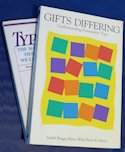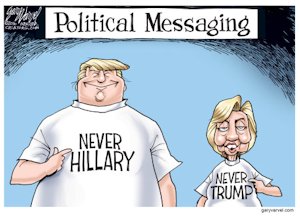
- About the MBTI
- Verify Your MBTI Type
- Personality Patterns
- MBTI Articles & Resources
- Article Directory for Educators & Students
- Books on Personality Types
- Emotional Intelligence & Personality Type
- Career Planning & MBTI
- MBTI Business Applications
- Lenore Thomson - Carl Jung Personality Type
- Site Map - Master Directory of All Articles
- MBTI Consultant Links
- Personality Type Workshops & Conferences
- Links to Other Type Websites
- Murder Mystery Business Theatre
- About Us
| 1 | 2 |
More About the MBTI® - Page 2.
Understanding the MBTI ® and Personality Type
 About Peter Geyer |
The following article by Australian Peter Geyer provides a nice introduction to Myers-Briggs MBTI concepts and applications. Peter (INTP) is a consultant, researcher and writer in the field of C G Jung's theory of psychological types. He conducts MBTI Accreditation and Qualifying programs and presents internationally on a regular basis. Many more articles can be found on Peter's website. |
About the MBTI® - Page 2.
Peter Geyer, INTP - Warrnambool, Australia
MBTI Preferences, Skills, Development, Culture.
A type preference doesn't necessarily translate into skill. For example, a person may prefer making decisions, but it doesn't follow that they are good ones and a person interested in possibilities about the future may not identify the most worthwhile and appropriate vision.
As these are preferences, people can and do develop skill in their non-preferred areas, but they do not change their core preferences. These skills, when developed appropriately, are simply support their original preferences A person preferring Perceiving can be most timely with all their work and attend to their diary, if it makes sense to them and a person preferring Thinking judgement can be interested in people and personal issues if they can see the logic in it.
Not spending sufficient time in your preferred modes can result in stress and lack of effectiveness in the workplace and at home. Mid-life is often a time for the recognition of non-preferences i.e. the usefulness of future possibilities for the person with their feet on the ground, or flexibility for the scheduled.
Jung considered it was important to acknowledge the value of the opposite preferences and to develop some familiarity and expertise with them.
While behaviour can be a predictor of type preferences to a certain extent, type theory recognises that there is more to personality than what you see.
Type is not simply behaviour, because people can perform the same task in the same way for different reasons. Types can also be identified cross-culturally (the MBTI is translated into about 40 languages), but the expression of people's preferences is contingent on their cultural experience.
MBTI and Organisations:
The first organisational use of the MBTI was in 1942, by co-author Isabel Briggs Myers and Edward Hay, the job analyst, who was then a personnel manager in an insurance company.
The MBTI has applications in diagnosing organisational issues, teamwork (particularly quality systems), communication, counselling, careers, strategic thinking, performance appraisal, leadership and stress management.
Different types approach change situations in different ways. Some are better at focusing on the future than others; others refer to the past, or the present, because the future is an unknown to them. Some people prefer to work through procedures (_S_J)/strategies (_NT_)/ people (_NF_)/to just do it, (_S_P), depending on their type preferences.
Organisations themselves also have a type. The type code can be a shorthand for 'the way things are done around here' e.g. a bank that is procedures driven hierarchical bottom line operation can be described as ISTJ; an entrepreneurial, flexible actively changing organisation like a merchant bank can be seen as ENTP.
Each of these profiles has their own strengths and weaknesses, advantages and disadvantages.
Practicality of the MBTI
What practical use is the MBTI and/or type? Well, it's a personality framework that makes more sense out of what people actually do than other frameworks. People of all walks of life identify with the general principles as having something to do with them in their daily lives.
It's also a positive framework: It's good to be you, whoever that is, and there are lots of practical things you can do with type e.g.:
Population: There's sufficient data around to make some assertions about the percentages of the various types in Australia. If you're an ESTJ, for instance, you can expect that around 11% of the population will share your preferences; if you're an INFJ, it's probably about 2%. Given this, you would expect that the first type would be more likely to have their way of looking at the world supported by many more people than the second, and that the first type would expect more people to be like them. This has consequences for self-esteem, motivation, peer group pressure etc. although population statistics are only a small part of the impact of type in these areas.
Careers/Personal Development: The MBTI helps people identify career and /or life paths. There's lots of literature on this. Your type preferences indicate the skills you're most likely to be able to pick up easily, as well as the occupations that you might be interested in or how you operate within your chosen occupation.
For example, an INFP lawyer, driven by internal personal values and new interpretations of the law, will operate differently from an ISTJ one, driven by precedent and tradition.
While people whose preferences are consistent with large numbers of those in a particular profession or occupation may feel more comfortable operating in that field, those who have different preferences can add to the perspective and approaches simply through seeing things differently. No organisation benefits from people being much the same, particularly in senior positions.
Type is also useful in strategising interviews and helping people appreciate that everyone is not like them and so work, career expectations can be different.Learning Styles: Different Types learn more effectively in different ways. Some like and learn through group work, others don't. Some like to get their hands on what's to be learnt, others don't; some learn through discussion, others reading; some are interested in theory, others practice.
The practical ESTJ manager may participate actively in a residential course designed to develop a mission and vision for his company, but may not apply the principles discussed when they return to the office unless there is some practical reason or role-modelling by other managers that can convince them to change their approach to management. This approach may stun fellow managers preferring Intuition whose mode of thought commonly includes appreciation of new ideas first, before testing out their practicality.Teambuilding: Type is particularly effective in building and maintaining teams because it identifies similarities and differences in communication styles and how people prefer to work e.g.
- Some types want to work smarter (_NT_s), not harder (_S_Js)
- Some types want to put in minimum input for required output (_S_Ps)
- Some types think if they just work harder, things will work out (_S_Js)
- Some types want to be liked, in order to do their best work (_NF_s)
Some different team approaches can be explained quite simply:
- Extraverts (E) need activity to participate, learn and understand.
- Introverts (I) need time to reflect, often by reading, to interact.
- Sensors (S) need hard, tangible data, often visually presented.
- Intuitives (N) need to know the vision, the big picture.
- Thinking judgers (T) need to see the logic.
- Feeling judgers (F) need harmony in the team.
- Judging Types (J) need to follow the plan, the order.
- Perceiving Types (P) need information in advance, to decide.
Communication: The types communicate in different ways: big picture(N) /facts (S) ; values(F) /objectivity(T) ; talking(E)/ writing etc.(I)
Making sure you're understood in the way you want means using type based strategies to deal with others more effectively. Many adult training methods presume the desire for group work and active discussion for all adults. For many types e.g., ISTJ, INTP this is not a productive way to learn unless there's a relevant context.
Leadership: This overused term means different things for different people. For some types, mostly Introverts, leadership means leaving them alone to do their job. Some, usually _NT_s, don't want to follow leaders at all. People that prefer Sensing generally want someone to model the behaviours required, for some (_S_Js) in a traditional, authority laden role, for others (_S_Ps) as the leader of action. Some, usually _NF_s, look for a charismatic leader.
Type theory contends that all types can lead in a valuable way. Most senior executives, however, prefer __TJ, thus limiting the possible roles and so also guaranteeing particular pitfalls and the invariable need for damage control when something goes wrong and affects people's lives and livelihoods.Counseling: Different types get stressed or stimulated in different ways. Counseling strategies are more effective taking type into account, particularly in relationship counselling. Cognitive dissonance often takes many types outside their comfort zone and so they are less effective.
Why use the MBTI and not some other instrument or process?
The main benefit in using the MBTI is its breadth of application. You can use it in almost any situation and it's buttressed by a comprehensive and robust theory of personality. In one sense, then, there is no competition to the MBTI in workplace use as there is no comparable theory of personality associated with other methods.
The statements above on the MBTI come from substantial research and observation. In using the MBTI, you have to be aware that the way it describes the world is at times quite different to the way personality is conventionally seen. So you need to see if the view the MBTI represents is one you and your clients consider useful.
It's inappropriate to use the MBTI when a workforce or person is under stress or there is a lack of trust, as you're unlikely to get accurate answers to the questions. People don't need to know type to be aware of the hidden requirements for succeeding in an organisation that literally clones its senior executive, for instance. Other processes also have their use and application.
® MBTI, Myers-Briggs, Meyers Briggs, and Myers-Briggs Type Indicator are registered trademarks or trademarks of the Myers-Briggs Type Indicator Trust in the United States and other countries (aka meyers briggs or myers briggs).
![]() For more articles by or to contact Peter Geyer see www.petergeyer.com.au
For more articles by or to contact Peter Geyer see www.petergeyer.com.au
![]() For a more information on the 16 Types, see "Verifying Your Type - Profiles & Characteristics of the 16 Types"
For a more information on the 16 Types, see "Verifying Your Type - Profiles & Characteristics of the 16 Types"
© Published by Ross Reinhold & Reinhold Development 1997 - 2023
Privacy Policy About Us


